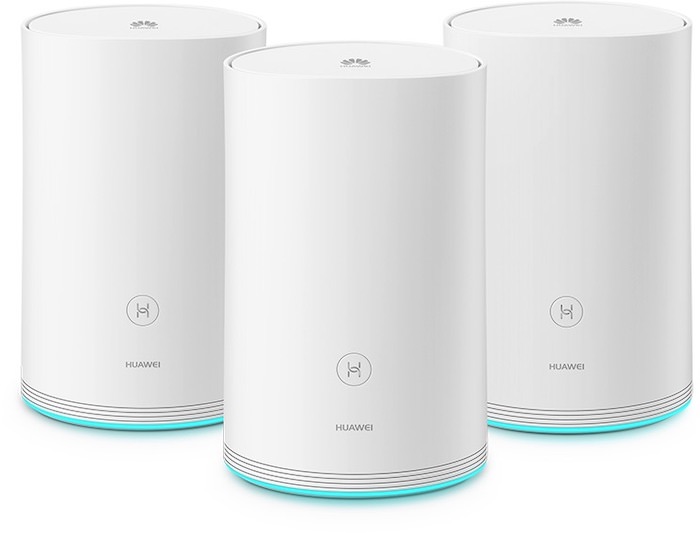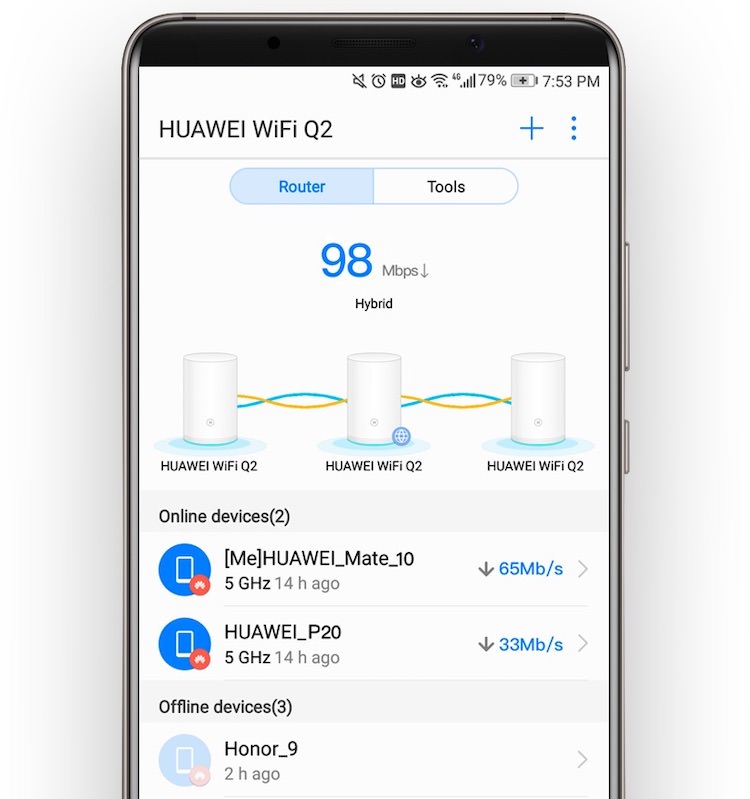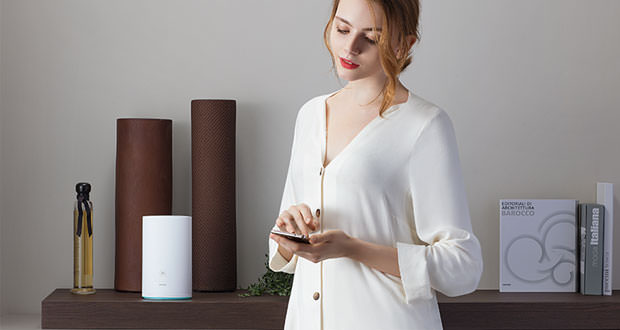Huawei WiFi Q2 is the Hybrid Wi-Fi system for the home
Huawei WiFi Q2 improves Wi-Fi signal coverage and data transmission speeds using a hybrid Mesh approach: ether and electrical connection to transfer data via the web.
It is difficult, in these times, to think of a home that, regardless of size and type, does not have some form of Internet connection inside it. Whether it is wired or ether, we tend to assume that a web signal is accessible, and that it is well present within the Wi-Fi environments.
However, it will have happened to everyone that they cannot get good Wi-Fi coverage at home, especially when the Wi-Fi router (maybe the one supplied by our Internet provider) is located in a residential area that is peripheral, and this is why it is too far from some of the environments.
To solve this type of coverage problems, or a signal that arrives but is weak, it is sufficient to integrate your system with a second WiFi source, or other additional depending on the size. You can reuse disused routers by transforming them into access points and sharing the main network, or buying a Wi-Fi extender that works by replicating the signal of the main router.
 A third option, technically preferable, is to use a kit of satellites that exploit Mesh technology. One of the satellites provides connectivity from the router of its service provider, and this shares the signal with the other satellites, maximizing the transmission speed between them so that the devices connected to them do not encounter bottlenecks in the data transfer. Various solutions of this type are available on the market.
A third option, technically preferable, is to use a kit of satellites that exploit Mesh technology. One of the satellites provides connectivity from the router of its service provider, and this shares the signal with the other satellites, maximizing the transmission speed between them so that the devices connected to them do not encounter bottlenecks in the data transfer. Various solutions of this type are available on the market.
Huawei is a well-known brand for its mobile solutions, smartphones and tablets, but the Asian company is also involved in telecommunications solutions, producing systems and systems on which the traffic of the various telephone carriers is based. It should not be surprising to see a product like Huawei WiFi Q2 proposed on the market by this company, as the technology base for this type of systems is well present in Huawei.
Huawei WiFi Q2 is a kit of Wi-Fi satellites that use Mesh technology to ensure the best connection of the various devices to home Internet connectivity. The connection between the satellites takes place for the first time in hybrid mode, taking advantage of both the 5GHz connectivity with 867 Mbps band and with the Gigabit PLC flow, ie using the power line. If the structure of the house allows it, it is still possible to connect the satellites to each other via an Ethernet cable: in this case, the highest data transmission speed is ensured.
The satellites are identical in construction: compact size, front button for WPS connection with compatible devices. On the rear connector for power cable and gigabit ethernet 3 ports to connect devices directly via cable.

For our tests, the Huawei WiFi Q2 kit was installed inside an apartment of about 110 square meters, in which there is a Wi-Fi Telecom modem supplied as standard equipment for fiber connectivity. The modem is located at the entrance of the apartment, a position that prevents with the integrated Wi-Fi solution to ensure a capillary coverage of all rooms.
A series of satellites with MiMo technology comes in handy, in configurations of this type, in which you want to ensure coverage of the signal in the environments as well as the speed of transfer of adequate data.
The kit configuration is very fast and intuitive, based on the interaction with the Huawei SmartHome APP which will also act as a control center for our network. It connects the first satellite, clearly indicated as such in the product packaging, to the mains and ethernet cable to the home router. Time 2 minutes and the configuration via DHCP is completed automatically: at this point, the satellite starts transmitting Internet connectivity on its WIFi network by default.
It is obviously possible to configure the network according to our personal preferences in terms of password and name. Once the first satellite is finished, it will be the turn of the remaining two, which will have to be positioned in the environment so as to ensure adequate coverage but at the same time be able to connect in a solid way to the other satellites.
 Once powered, it takes about 2 minutes to proceed with the automated configuration and enter the Mesh network. By default, each satellite creates a network with a specific name: to avoid having to authenticate each time to the specific network of the satellite to which you are connected, it is advisable to change the name and password of the network access of each satellite using it.
Once powered, it takes about 2 minutes to proceed with the automated configuration and enter the Mesh network. By default, each satellite creates a network with a specific name: to avoid having to authenticate each time to the specific network of the satellite to which you are connected, it is advisable to change the name and password of the network access of each satellite using it.
For each device connected to the network, it is possible to select specific limitations, ranging from limited access for duration to maximum limits in data transmission speeds. These are configurations accessible by APP, with which it is very intuitive and simple to interact and that allow you to specifically adapt the behavior of Wi-Fi devices in the environment according to our preferences and needs.
Once installed in the environment and optimized the operation, you forget to have Huawei WiFi Q2 inside the home. The signal automatically switches from one satellite to another, depending on which guarantees the most powerful signal for the device we are using.
The shape of the satellites and their aesthetics also makes them easy to place in the home, without showing them can somehow ruin the impact of the furniture. In the lower part of the satellite a blue LED lights up when the operation is correct, switching to red when there are problems: it can be disabled completely by APP if you do not want the satellite to be made more visible in some way from this lighting.
Huawei WiFi Q2 is sold at a price of ¥799.00, price list that is aligned to that of similar proposals for number of satellites and technical features. The availability of products of this type, based on Mesh technology, goes in the direction of ensuring a web signal always stable within every domestic environment regardless of the shape of the environments and their size.
Thinking of the presence of smart speakers, smartphones, smart light bulbs, video cameras, televisions and any other type of smart device it is clear how taking care of Wi-Fi coverage is an essential prerequisite for any home that wants to be comfortable, welcoming and even smart.
The hybrid connection, via Wi-Fi and using the electrical connection, is the unique technical feature of Huawei WiFi Q2 compared to the competition. It is an element that, as the company rightly points out in the notes, requires a compatible domestic system in order to achieve the best performance: during our tests, in an apartment with an electrical part that is certainly not recent, it is well behaved ensuring connections stable and with high data-transfer speed. What requires its own home Internet connection.

